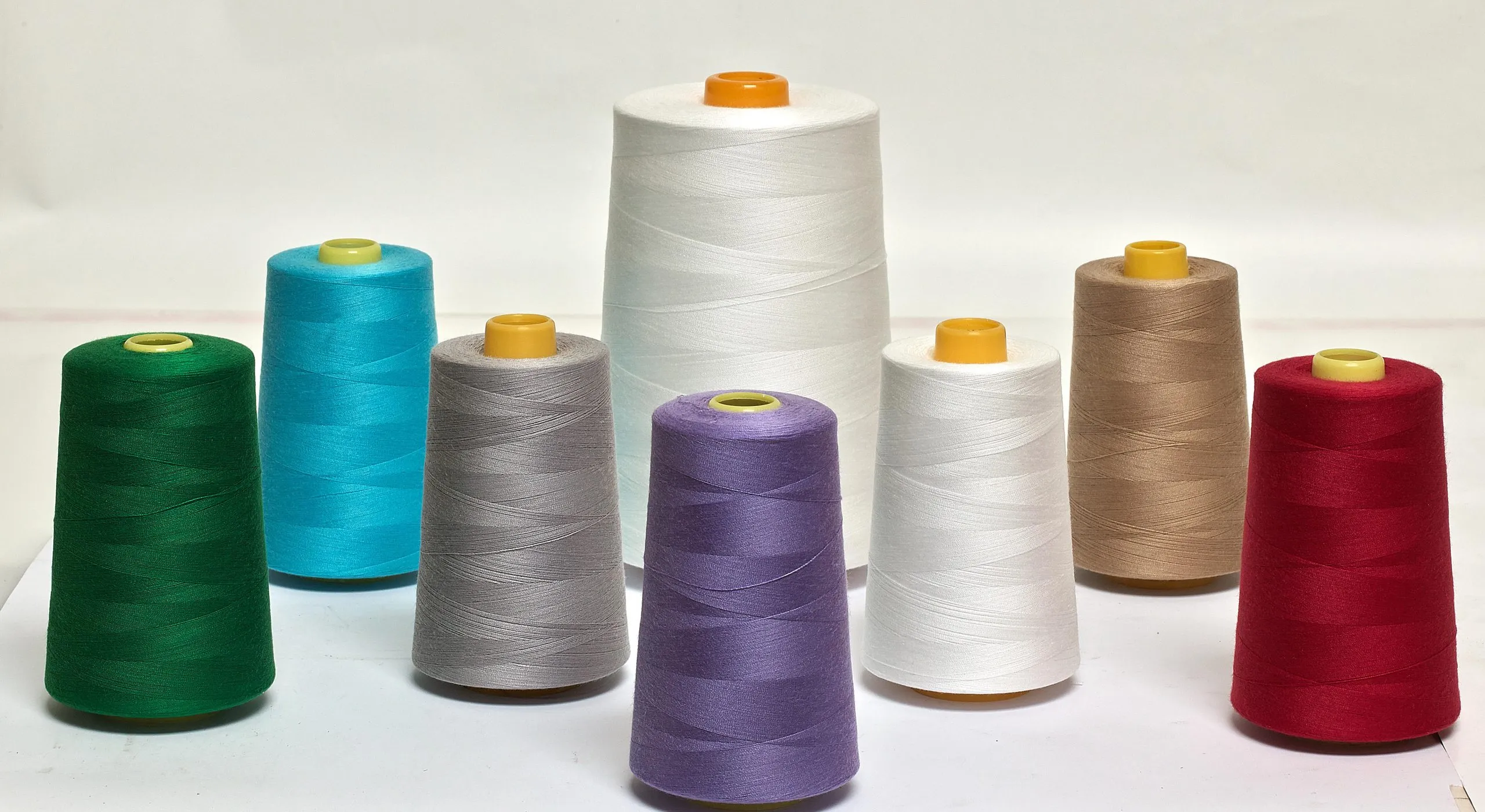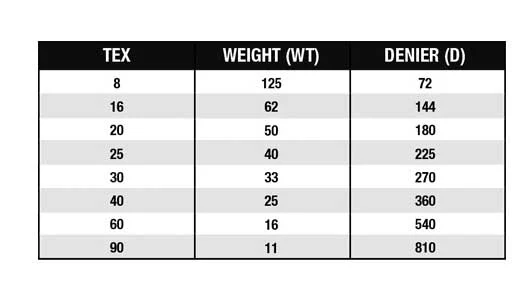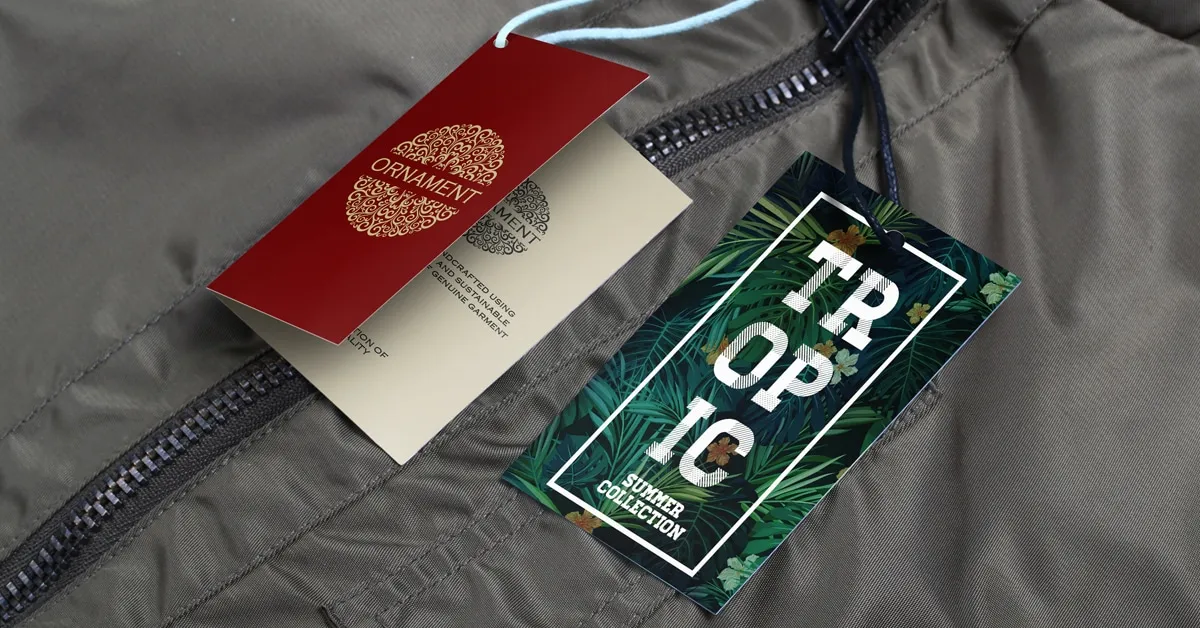
A swing tag is a small detail with a big impact. Commonly seen hanging from garments, bags, and retail products, it’s the tag that carries your brand name, product information, and story all before the customer even tries the item on. Though simple in appearance, a swing tag can influence how shoppers perceive your product’s quality and value. Let’s explore what swing tags are, why they matter, and how to design them effectively for your clothing line.
What Is a Swing Tag?
A swing tag (also commonly called a hang tag in the U.S.) is a non-adhesive label that’s attached to a product — most often clothing, accessories or retail items by a string, cord, plastic barb or other fastener. doesn’t stay on the garment for wear, a swing tag plays a key role in branding, product information, retail compliance and consumer perception. It’s both a functional information carrier and a visual branding tool. In this article we’ll dive into what a swing tag is, why it matters, the important design and material considerations, how to use it effectively, and best practices for your apparel or accessories business.
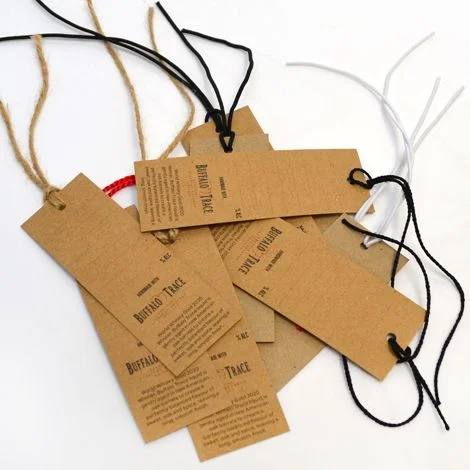
Why Swing Tags Matter
At first glance, a swing tag might seem like just a piece of card, but it plays a far greater role in shaping customer experience. It’s one of the first physical touchpoints between your brand and the buyer, delivering key information such as size, price, fabric content, or care details. Beyond information, it helps express your brand personality — minimalist, luxurious, sustainable, or youthful. A well-designed swing tag instantly sets the tone for your collection, creating a professional, cohesive impression that builds trust before purchase. Swing tags matter for several reasons:
- Branding: They offer a prime piece of real estate for your brand logo, visual identity and first impression on the shelf or online.
- Information & Compliance: They deliver product details (like size, material/fibre content, care instructions, barcode/SKU, country of origin) in a way that’s visible and accessible to the buyer before purchase.
- Perceived value: A well-designed swing tag contributes to how premium or professional a product appears — it can elevate perception, support pricing, and differentiate your offer from competitors.
- Retail logistics & inventory: They often include barcodes, QR codes or SKU info that help with tracking, scanning at POS, or inventory management.
Because of these roles, swing tags aren’t just an optional extra — they’re a strategic piece of your product presentation and retail readiness.

Construction, Materials & Attachment
How a swing tag is built says a lot about your brand’s attention to detail. From the paper type to the cord material, every element adds to the product’s tactile and visual appeal. Most swing tags are made from high-quality paperboard or kraft stock, often enhanced with coatings, embossing, or foil details. The way it’s attached — whether with a cotton string, jute cord, or plastic loop — must be functional, durable, and aligned with your aesthetic. Premium finishes or custom shapes can help your tag stand out while still keeping it practical for display and handling. When designing a swing tag, the physical build-up is as important as the content. Key considerations include:
- Material: Common substrates are paperboard/cardboard (for cost-effectiveness and print quality), kraft paper (for eco/organic branding) and synthetic films (for outdoor, humid, or rugged-use products) which offer durability.
- Thickness / GSM: Heavier GSM paper gives a sturdier feel and supports premium positioning; lighter materials may be fine for simpler or low-cost items.
- Surface finish & print compatibility: Choices like coated vs uncoated, matte vs gloss, lamination or UV varnish impact visual aesthetic, durability (abrasion, moisture) and print clarity.
- Attachment method: Typical attachment uses a punched hole + eyelet or reinforced grommet through which a string, cord, plastic loop or barb fastener is threaded; choice depends on product type, expected handling and brand styling.
- Shape & size: While many tags are rectangular, custom die-cuts, rounded edges or unique shapes give brand personality — but you must balance aesthetics with readability and functional info.
For your apparel or accessory line, early alignment between your tag design and production / packaging process helps ensure the swing tag fits the product, functions for retail display and remains durable through logistics.

What Information Goes on a Swing Tag
Every swing tag should strike a balance between design and useful information. It’s not just about looking good it needs to communicate clearly. Typical swing tags include your brand logo, product name, size, price, barcode, and sometimes care or material details. Some brands use this space to highlight sustainable materials, promote a seasonal collection, or add a QR code linking to online content. The goal is to give shoppers all the key facts at a glance while reinforcing brand identity through thoughtful layout and design hierarchy. What you include on a swing tag depends on your brand strategy, compliance requirements and retail environment. Common elements:
- Brand identity: Logo, brand name, tagline or other visual markers.
- Product information: Size, colour, material/fibre content (for textiles), SKU, collection name.
- Retail data: Barcode / UPC, QR code, pricing (optional since price may be stickered later), colour code, lot or batch number.
- Care instructions or key features: Especially for apparel — “wash cold”, “do not bleach”, or special features like “waterproof lining”, “organic cotton”.
- Sustainability or ethical messaging: If relevant, include eco-credentials, certifications (Fair Trade, Organic), or brand story snippet.
- Retail/consumer cues: Website URL, social media handles, “Scan for more info”, promotional message.
- Compliance/legal text: Depending on market and product — e.g., country of origin, fibre composition, regulatory warnings.
The tag must balance aesthetic/branding goals with legibility and functional information transparency. Over-crowding the tag can reduce clarity, so prioritize what matters most for your target market.
Design & Branding Strategy
Your swing tag is a miniature billboard for your brand. Its design should reflect your overall identity — from colour palette and typography to finishes and materials. A luxury label might use thick matte card with gold foil and minimal text, while a sustainable brand might choose recycled kraft paper and earthy tones. The tag should feel like an extension of your packaging and garment label system, keeping consistency across all touchpoints. Strong design not only enhances shelf appeal but also helps customers remember your brand long after the purchase.
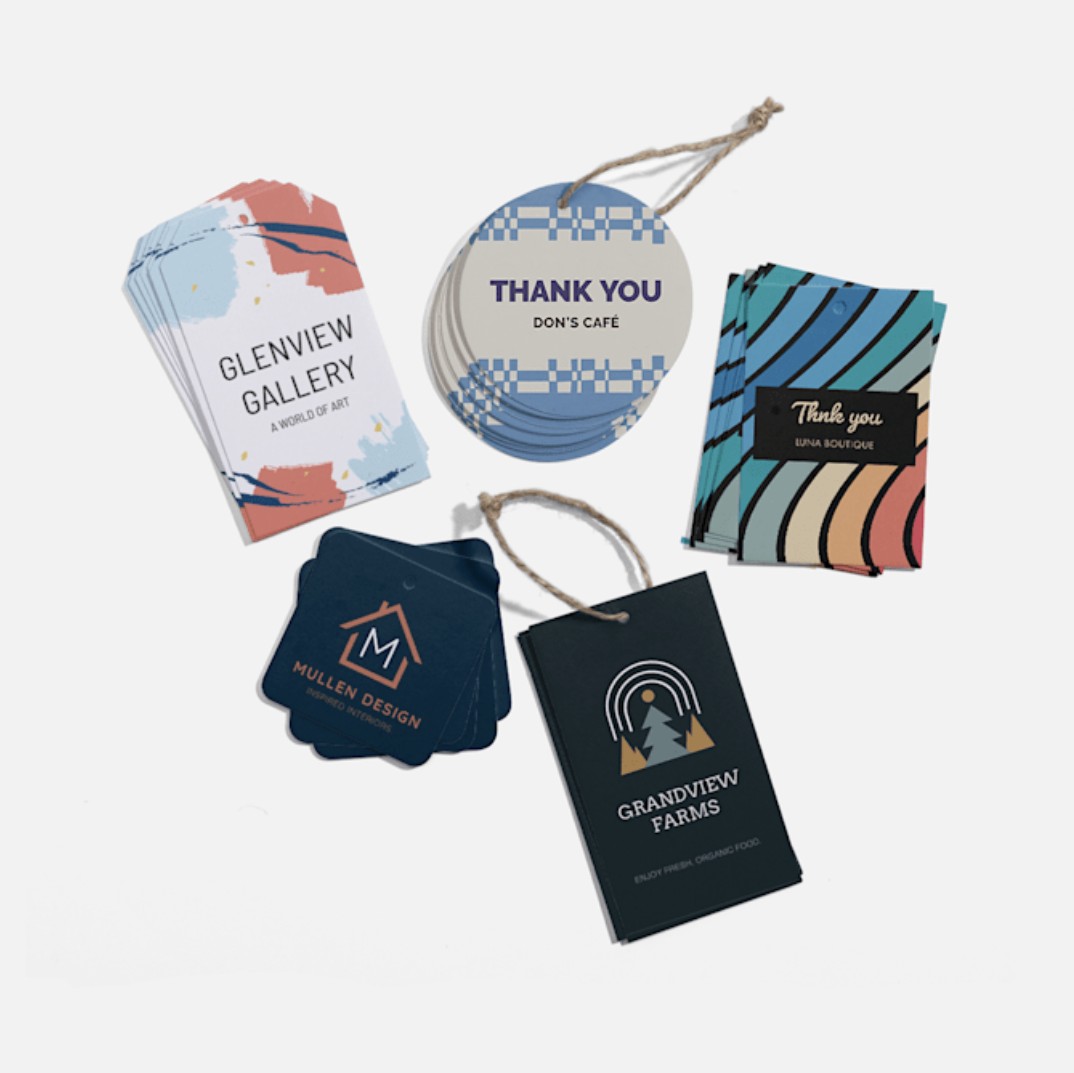
From a branding perspective, the swing tag is an extension of your product’s identity and a key touchpoint at the moment of purchase. Some design/branding strategies:
- Match your brand aesthetic: If your brand is minimalist, use clean fonts, muted colours, minimal information; if it’s bold or streetwear-driven, you might use bright colours, thick card, special finishes (foil stamping, embossing).
- Premium finishes for value perception: High-quality materials, special textures, heavier card, added finishing (embossing, foil, spot UV) reinforce a premium feel.
- Story-telling: Use the tag to tell a little brand story, highlight craftsmanship, sustainable materials, or brand mission — this converts the tag into emotional engagement.
- Retail shelf appeal: Since swing tags hang off shelves or apparel racks, think visually — how will the tag look at eye level, how does it catch attention, does it align with your display environment?
- Functional usability: Ensure the tag is easy to attach/remove, doesn’t damage the product, and maintains its integrity through logistics (transport/handling).
- Media and digital integration: Add QR codes or links that invite the buyer to engage online; this transforms the tag into a gateway for further brand interaction.
In short: your swing tag is not just a label—it’s a mini-marketing asset and part of the product experience.
Production & Cost Considerations
While swing tags are small, their production requires smart planning and budgeting. Every choice from material thickness to print finish affects cost and lead time. Small-batch brands may face higher per-unit costs, so designing a versatile tag that can work across multiple products or seasons is often more efficient. It’s also important to account for labour costs in attaching tags and to align tag production with your garment schedule to avoid last-minute delays. Striking the right balance between premium feel and practical cost is key to long-term sustainability.
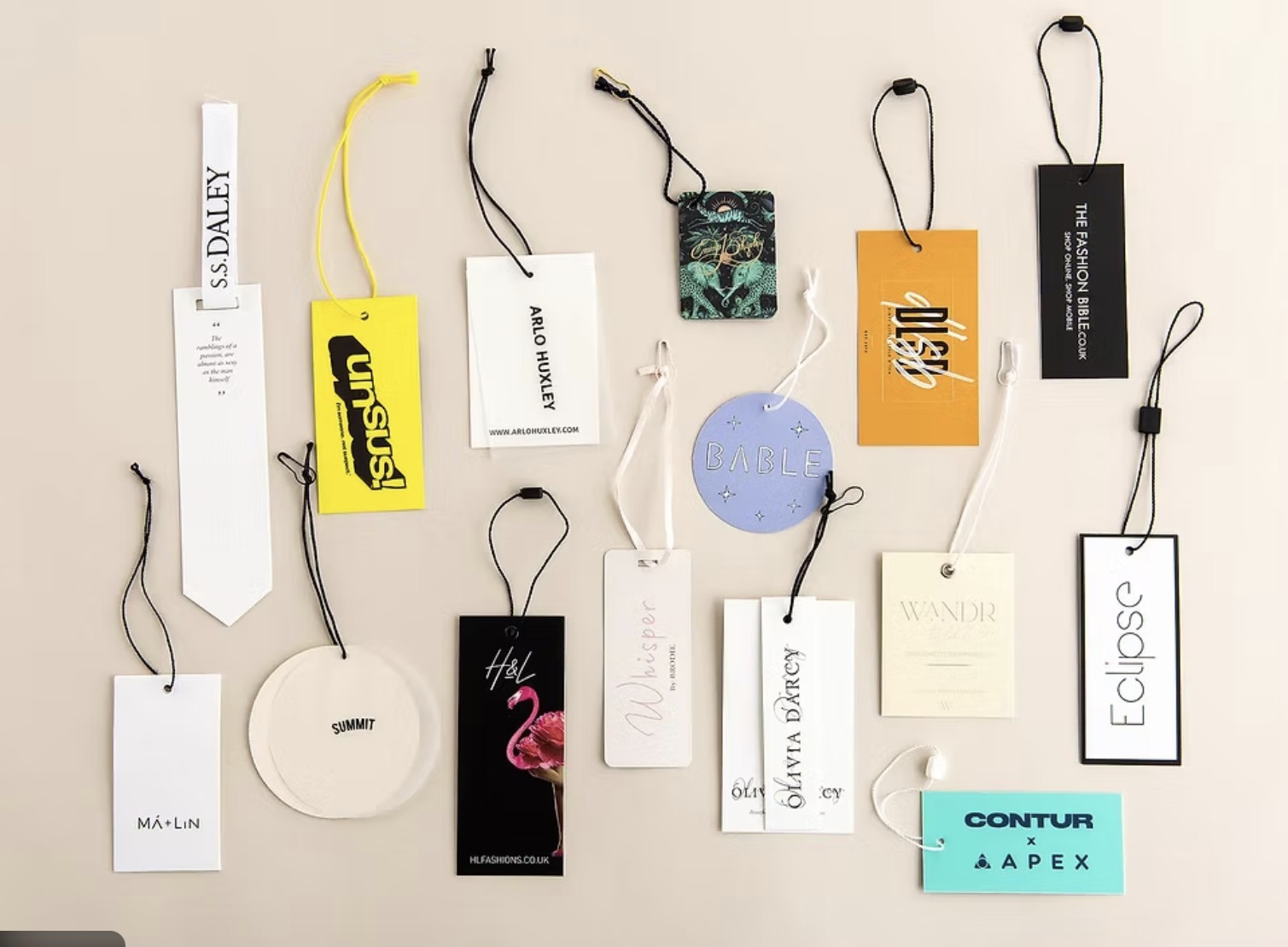
When planning swing tags, keep production and cost factors in mind:
- Print run size and unit cost: Smaller batches often mean higher cost per tag. If you vary your tag per season/collection, ordering too many can add inventory risk.
- Material/finish cost differential: Upgrading to heavy card, synthetic films, special finishes adds cost, so budget accordingly — especially for small-batch brands.
- Attachment labour/time: Tagging each item takes time; for mass production you may want to streamline attachment (e.g., tag-guns, fasteners).
- Lead times & logistics: Custom die-cuts or embossed finishes may increase turnaround time; plan early so tags don’t delay the garment production/packaging schedule.
- Sustainability costs: Recycled paper, eco-inks, FSC certification may increase cost but support brand values, especially if you’re positioning around sustainable fashion.
- Inventory and versioning: If you offer multiple colours, sizes or seasonal variants, maybe design a universal tag platform with minimal changes to keep cost down.
Balancing aesthetics, brand value and cost is key — you want your swing tags to enhance your product without eating too much margin or complicating production logistics.
Best Practices & Retail-Ready Checklist
Creating swing tags isn’t just about aesthetics; it’s about functionality and compliance, too. Ensure your tags are securely attached, easy to read, and durable enough to survive shipping and handling. Test barcode or QR code scanning before mass printing to avoid retail issues. Always double-check spelling, pricing, and legal details like country of origin if required. Finally, coordinate with your manufacturer so tags arrive on time and match your packaging workflow a smooth tagging process keeps your products retail-ready and professional from day one.
Here are some actionable best practices when implementing swing tags for your clothing or accessory line:
- Use clear attachment method: Choose string, cord or plastic loop appropriate for the product and the retail environment.
- Ensure legibility and scan-ability: Barcodes/QR codes must be printed sharply, with appropriate contrast, and font sizes readable even at a glance.
- Align tag content with product and brand: For example, if garments are made of organic cotton, mention that; if they’re waterproof outerwear, tag should reflect performance.
- Plan durability and handling: Even though tags are removed before use, they must stay intact during transit, display, customer handling. Avoid hanging tag scattering or fall-off.
- Integrate sustainability if relevant: Use recycled materials, minimise ink waste, consider supplier certifications.
- Test fit and placement: Ensure the tag doesn’t interfere with the product (e.g., isn’t placed such that it damages fabric or hangs awkwardly), and that it displays well in store/online.
- Coordinate tag and garment production schedule: Don’t let the tag be an after-thought — it should be part of your packaging/finishing workflow.
- Keep inventory of tag variants and cost in budget: Track cost per unit for tags, fasteners and labour, so you understand your full landed cost.
- Consider multi-language or regional variants if you sell globally.
- Review regulatory/retail compliance: Depending on market and product category, ensure the tag includes required information (e.g., fibre content, country of origin, care instructions).
Summary / Final Words
A well-designed swing tag is far more than a simple piece of card hanging from your garment. It’s a multifunctional tool conveying essential product information, reinforcing brand identity, aiding retail/logistics, and enhancing the perceived value of your offering. For apparel brands, especially those looking to stand out or position themselves as premium or sustainable, the swing tag is a small but powerful asset. When designed thoughtfully, produced reliably, and integrated into your finishing workflow, it supports both brand strategy and retail execution.
FAQs About Swing Tags
What is the main purpose of a swing tag?
A swing tag provides key information about a product such as brand name, size, price, fabric composition, or care details while enhancing the item’s presentation. It helps customers quickly understand product features and supports brand recognition before purchase. For apparel and retail brands, swing tags are both functional and a strong visual marketing tool.
Are swing tags the same as clothing labels?
No. Clothing labels are sewn or printed directly onto garments and stay with the product after purchase. Swing tags, on the other hand, are temporary and attached by a string or plastic fastener. They’re removed before wearing but serve as the first point of contact for customers during shopping.
What materials are commonly used for swing tags?
Swing tags are typically made from paperboard, kraft card, or recycled paper, depending on the brand’s look and sustainability goals. Premium brands may use textured cardstock, foil accents, or even wood, metal, or fabric tags for a luxury feel. Eco-friendly options such as FSC-certified or recycled paper are increasingly popular.
What information should appear on a swing tag?
Common details include the brand logo, product name or code, price, size, barcode or QR code, care instructions, and country of origin. Many brands also include sustainability messages or social media links to boost engagement. The goal is to combine essential product information with brand storytelling in one compact space.
How are swing tags attached to products?
They’re usually attached using cotton strings, jute cords, or plastic fasteners inserted through a small punched hole. The attachment must be strong enough to handle shipping and in-store handling but easy for customers to remove. Some high-end brands use custom embossed cords or metal clips for a distinctive touch.
What size should a swing tag be?
There’s no fixed rule, but most swing tags measure between 50 × 90 mm and 70 × 120 mm. The ideal size depends on how much information you need to include and your product type. Larger tags allow for storytelling and visuals, while smaller tags suit minimalist designs or delicate items.
How can swing tags help in marketing?
A creative swing tag does more than inform it communicates brand personality. Through design, texture, and message, it reinforces brand value and creates an emotional connection with shoppers. Adding QR codes or website links can also drive online traffic and post-purchase engagement.

